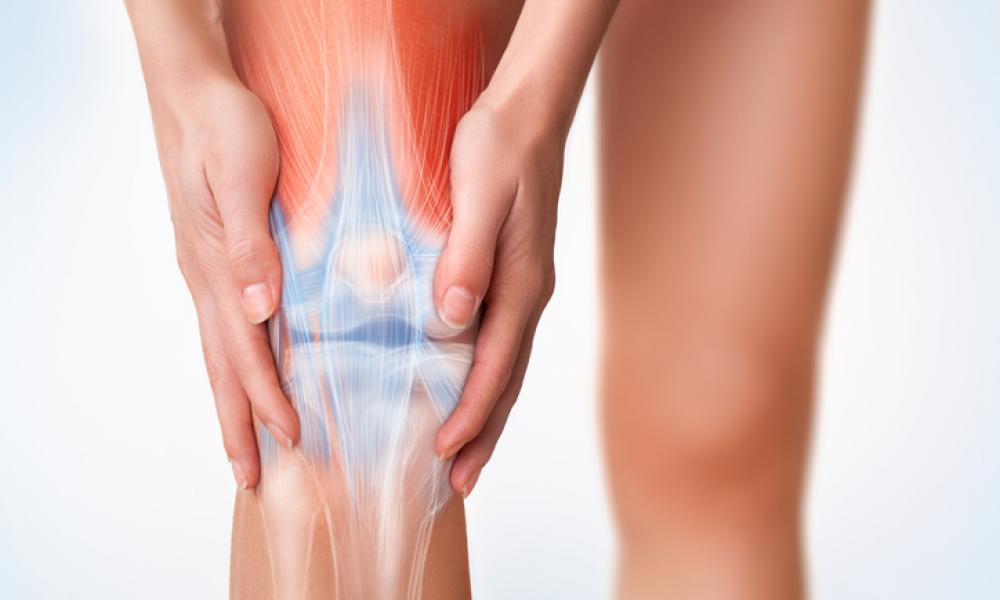
What is enthesitis?
Enthesitis is an inflammation of the ‘enthesis’, the point where a ligament, tendon or the fibrous capsule that encloses the joint attaches to a bone. There are over 100 entheses in the body. Enthesitis occurs when these entheses become inflamed.
What are the symptoms?
Enthesitis typically causes pain at the enthesis that gets worse with movement. Stiffness of the surrounding joints is also a common symptom. Enthesitis can also cause bone spurs, abnormal bone growth on the edge of a bone. This can add to the pain and discomfort.
 In people with axial spondyloarthritis (axSpA), enthesitis commonly affects the point where the Achilles tendon attaches to the back of the heel or the plantar fascia, in the arch of the foot, in the knee and in the spine. However, it can affect any enthesis in the body.
In people with axial spondyloarthritis (axSpA), enthesitis commonly affects the point where the Achilles tendon attaches to the back of the heel or the plantar fascia, in the arch of the foot, in the knee and in the spine. However, it can affect any enthesis in the body.
What causes enthesitis?
The same inflammatory process that causes your joints to become swollen and sore in axSpAs can also cause enthesitis.
It is thought that repeated stress on an enthesis causes small amounts of damage to build up over time, which then triggers the immune system to respond. This causes the enthesis to become inflamed. However, while this would normally heal with ice and rest, in the case of people with axSpA where the immune system is already overreacting, this normal healing process can’t happen and the inflammation of the enthesis continues and can become chronic.
How is enthesitis diagnosed?
For most people, their medical history and symptoms are enough to diagnose enthesitis, particularly if there are other symptoms of axSpA. Simple tests, such as checking if the pain worsens when moving or when pressure is put on the joint, can determine whether the symptoms are due to enthesitis or something else. Your doctor may also send you for some medical images, such as an ultrasound or x-ray to help confirm the condition.
What will happen to me?
Research suggests that enthesitis is an indicator of greater disease activity in people with axSpA. This means that if you have enthesitis you are at greater risk of having more inflammation, pain and fatigue related to your axSpA. As a result of this, and because of the pain and fatigue that enthesitis can cause itself, it is important to work with your rheumatologist to find a treatment plan that works for you.
You may find that you need help with the impacts enthesitis has on your quality of life. Discuss these impacts with your doctor as they may be able to refer you to another health professional, such as a podiatrist, occupational therapist or psychologist who may be able to help.
Can enthesitis be cured?
The severity of enthesitis pain and stiffness can vary over time and may resolve naturally or with therapy. However, where enthesitis is caused by axSpA it is likely to reoccur due to the ‘flaring’ nature of the underlying condition. The aim of treatment is to manage this arthritis, manage the symptoms of enthesitis and minimise the impacts on quality of life.
What treatments are there for enthesitis?
Your doctor may initially treat your enthesitis with nonsteroidal anti-inflammatory drugs, sometimes known as NSAIDs. These may be tablets or creams that are applied directly to the site, known as ‘topical NSAIDs’. These can help to relieve the inflammation and pain of the enthesitis. However, the long-term use of NSAIDs is not recommended as they can have a number of negative side effects in the long-term, including negative impacts on the gastrointestinal system or kidney function or an increased risk of blood clots. Your doctor may also give you a cortisone injection into the affected enthesis.
Longer term treatment may involve you taking a biologic disease modifying anti-rheumatic drug (biologic or bDMARD). The aim of these medications is to control the underlying axSpA. This will, in turn, help to control your enthesitis and other symptoms.
What can I do?
There are a number of things you can do to reduce the pain and discomfort of enthesitis and reduce the impacts on your quality of life.
- Ensure that your axSpA is well-managed as this will help to keep the inflammatory process that causes enthesitis under control as well.
- Try to keep exercising. Exercise not only maintains our overall health and fitness it can also help manage pain by releasing endorphins.
- It can be difficult to start or continue exercising when you are in pain, particularly if your enthesitis affects your feet. However, there are a number of different options for exercise, including specific exercises that suit different forms of enthesitis. Speak with an exercise physiologist or physiotherapist to figure out an exercise plan that works for you.
- You may find that icing the affected areas can help.
- Maintain a healthy weight. Excess weight can put additional pressure on painful joints.
- If your enthesitis affects your feet, speak with a podiatrist. They can help you with how to best care for your feet, including the use of orthotics or specific footwear, particularly when your symptoms are active.
- Speak with an occupational therapist about how to manage fatigue.
- Speak with your doctor if you have any questions about the treatments you have been prescribed or about enthesitis itself.
- Speak with your GP about seeing a counsellor or psychologist if you feel you need to talk to someone about the impact enthesitis or axSpA is having on your mental wellbeing.
This resources has been developed based on the best available evidence. A full list of references is available upon request.









